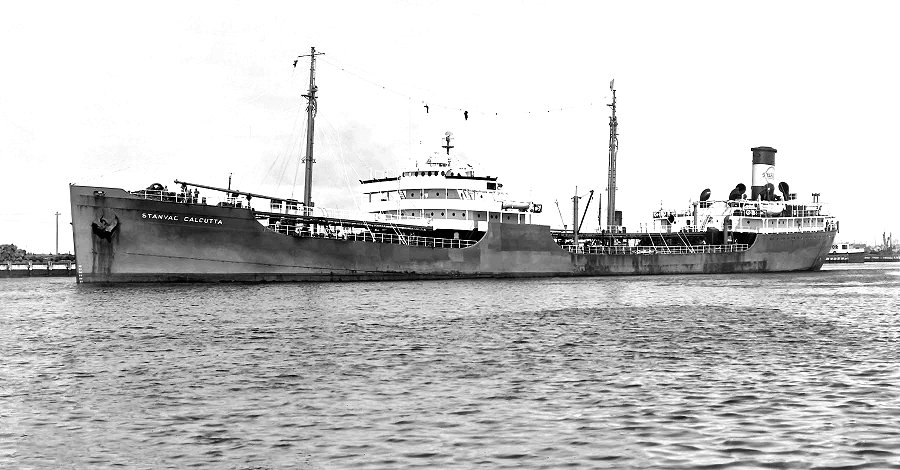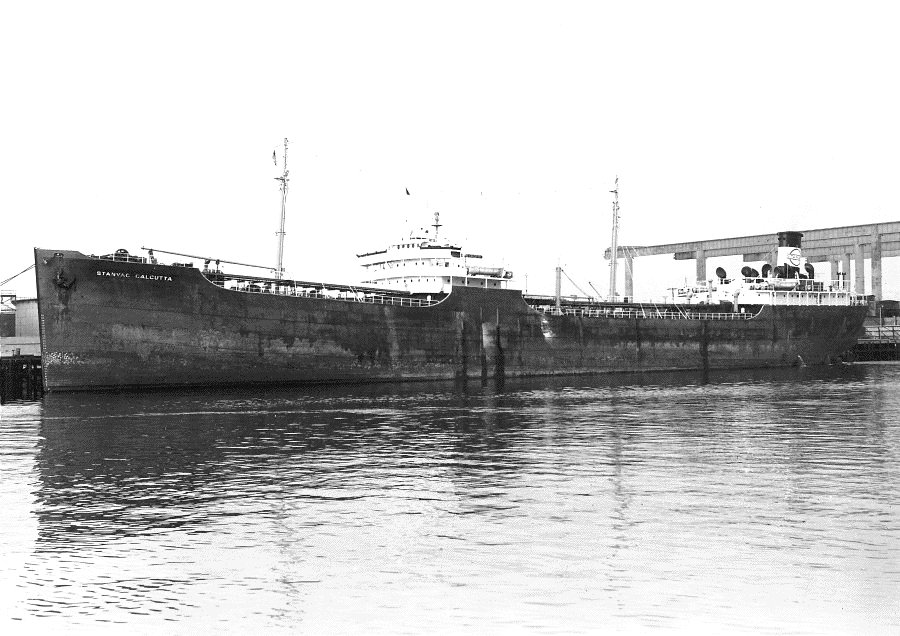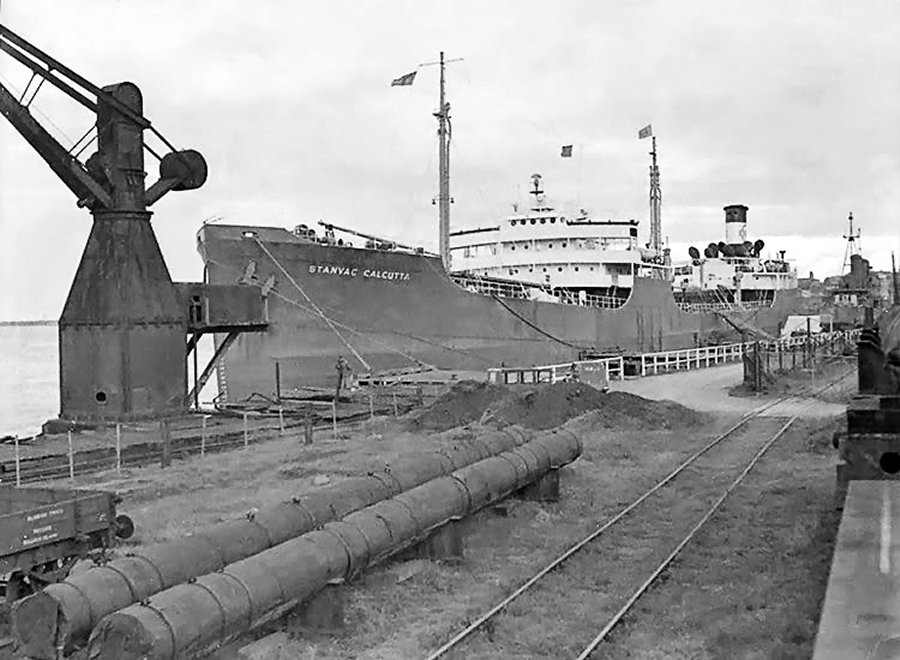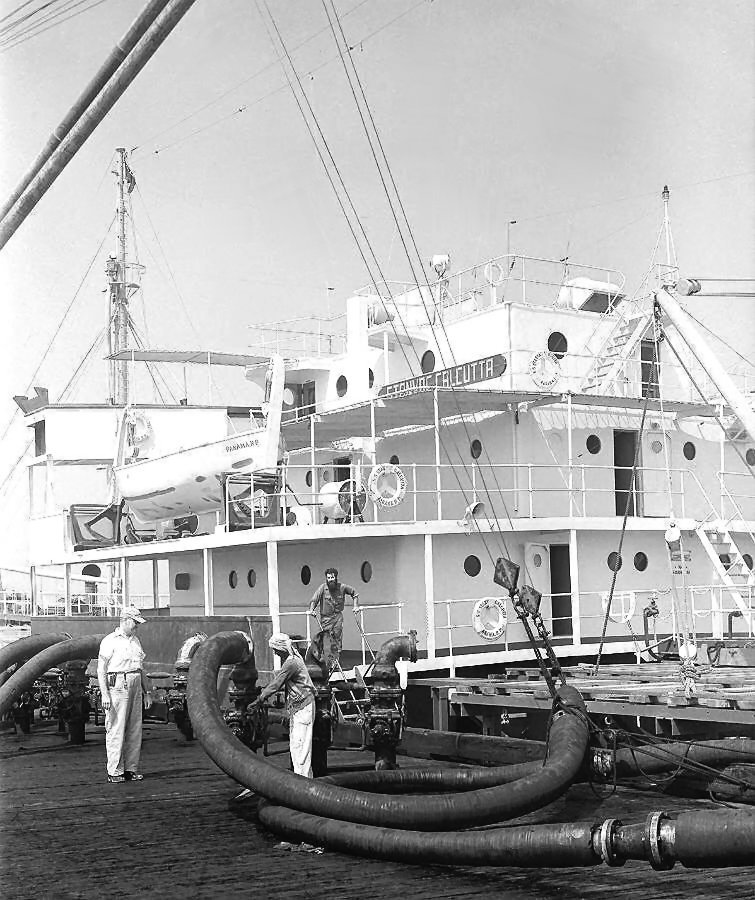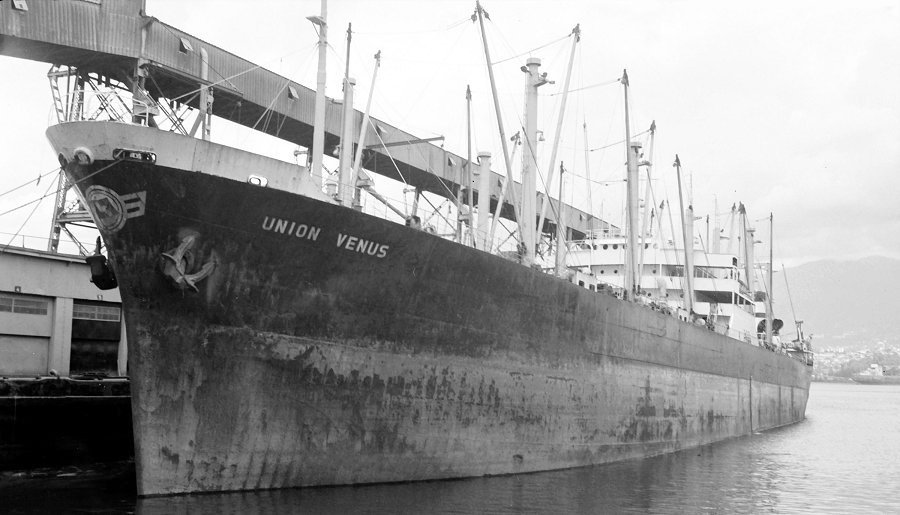Auke Visser's Famous T - Tankers Pages | home
Stanvac Calcutta (2)
T3-S-A1
Built September 1944 by Bethlehem Steel Shipyard, Sparrows Point, MD.,
as "Stanvac Calcutta" # 1680, for U.M.S.C.
1944 Sold private to Standard Vacuum Transportation Co., Ltd.
1961 Sold and renamed "Union Venus", China Union Lines.
1962 Converted to a bulker.
1975 Scrapped.
( See photos below )
The Miramar Ship Index for "STANVAC CALCUTTA"
IDNo:
|
5373361
|
Year:
|
1944
|
Name:
|
STANVAC CALCUTTA
|
Keel:
|
|
Type:
|
Tanker
|
Launch Date:
|
31.07.1944
|
Flag:
|
PAN
|
Date of completion:
|
09.1944
|
Tons:
|
9933
|
Link:
|
-
|
DWT:
|
16100
|
Yard No:
|
4424
|
Length overall:
|
152.9
|
Ship Design:
|
T3-S-A1
|
LPP:
|
148.6
|
Country of build:
|
USA
|
Beam:
|
20.7
|
Builder:
|
Bethlehem
|
Material of build:
|
Location of yard:
|
Sparrow's Point
|
|
Number of screws/Mchy/Speed(kn):
|
1ST-15
|
||
Subsequent History:
1961 UNION VENUS -
[ 1962 Lg 170.7 x 22.9m, 13783 grt & converted to bulk carrier ]
Disposal Data:
Scrapped at Kaohsiung 18.08.1975. [By Nan Feng Steel Enterprise Co., Ltd. ]
History :
ON
|
LR/IMO
|
ID
|
Year
|
Name
|
Tons
|
Change
|
Registered Owner
|
5373361
|
1944
|
STANVAC CALCUTTA
|
9933
|
Petroleum Sg., Co., Ltd.
|
|||
1619
|
5373361
|
5373361
|
1944
|
UNION VENUS
|
13783
|
1961
|
International Union Lines Ltd.
|
( Photo Copyright Allan Green )
"Stanvac Calcutta", location and date unknown.
( Photo Copyright Clive A Fisher )
"Stanvac Calcutta", source, location and date unknown.
( Photo Copyright Reserved )
"Stanvac Calcutta", loading or unloading, source, location and date unknown.
"Union Venus", ex. "Stanvac Calcutta" after rebuilding as a bulk carrier, at Vancouver, Canada, June 10th, 1970. (Photo Walter E. Frost)
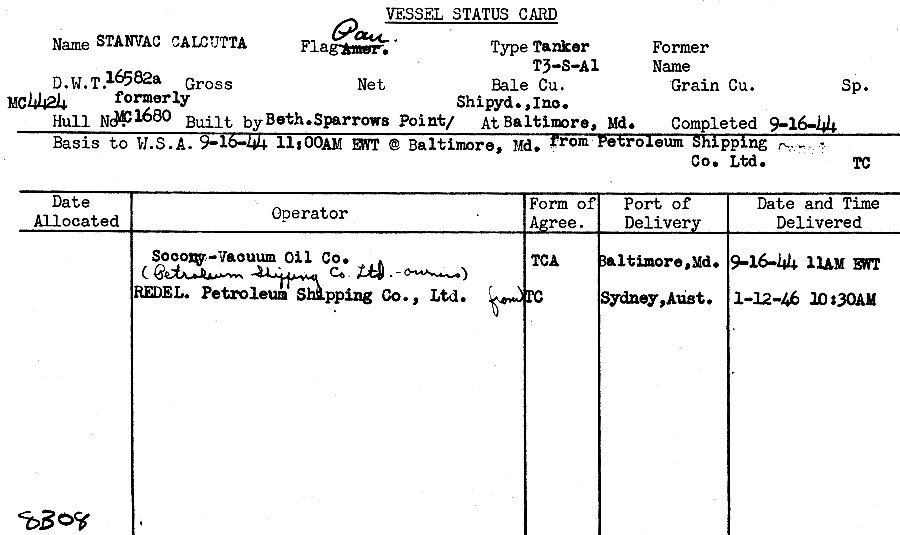
The SS Stanvac Calcutta was a T3-S-A1 tanker, the second with that name, a type of oil tanker built during World War II for the United States Maritime Commission. The T3-S-A1 tankers were larger and faster than Liberty ships, designed specifically for transporting petroleum products. Here are the details about the Stanvac Calcutta:
General Information:
Type: T3-S-A1 tanker
Operator: Operated by Stanvac (Standard-Vacuum Oil Company), a joint venture between Standard Oil of New Jersey (now Exxon) and Socony-Vacuum Oil Company (now Mobil).
Builder: Likely built by a major U.S. shipyard, such as Bethlehem Steel Shipyard, Sparrows Point, Maryland., which was known for constructing T3 tankers.
Launched: T3 tankers were built between 1942 and 1946, so the Stanvac Calcutta was likely launched during this period.
Specifications:
Length: Approximately 553 feet (168.6 meters)
Beam: 75 feet (22.9 meters)
Draft: 32 feet (9.8 meters)
Displacement: Approximately 21,880 tons (full load)
Propulsion: Steam turbine engines, powered by oil-fired boilers
Speed: 18 knots (33 km/h), making it significantly faster than T2-tankers
Cargo Capacity: Approximately 140,000 barrels of oil or other petroleum products
Role in World War II:
The T3-S-A1 tankers were critical for transporting fuel and oil to support Allied military operations during World War II. They were faster than Liberty ships, which made them less vulnerable to submarine attacks.
The Stanvac Calcutta would have been used to transport oil and petroleum products across the Atlantic and Pacific Oceans, supplying fuel for ships, aircraft, and ground forces.
Post-War Fate:
After the war, many T3 tankers were sold to private companies or converted for commercial use. Some were retained by the U.S. Navy or other governments for military purposes.
The specific fate of the Stanvac Calcutta is not widely documented, but it likely continued in commercial service or was eventually scrapped in the post-war years.
Sold in 1961 and renamed Union Venus.
She was lengthened and converted to a bulk carrier in 1962.
Scrapped in 1975 at Kaoshiung, Taiwan, by Nan Feng Steel Enterprise Co., Ltd.
Significance:
The T3-S-A1 tankers, including the Stanvac Calcutta, played a vital role in the Allied victory by ensuring a steady supply of fuel, which was essential for military operations. Their speed and capacity made them highly effective in wartime logistics.
|
